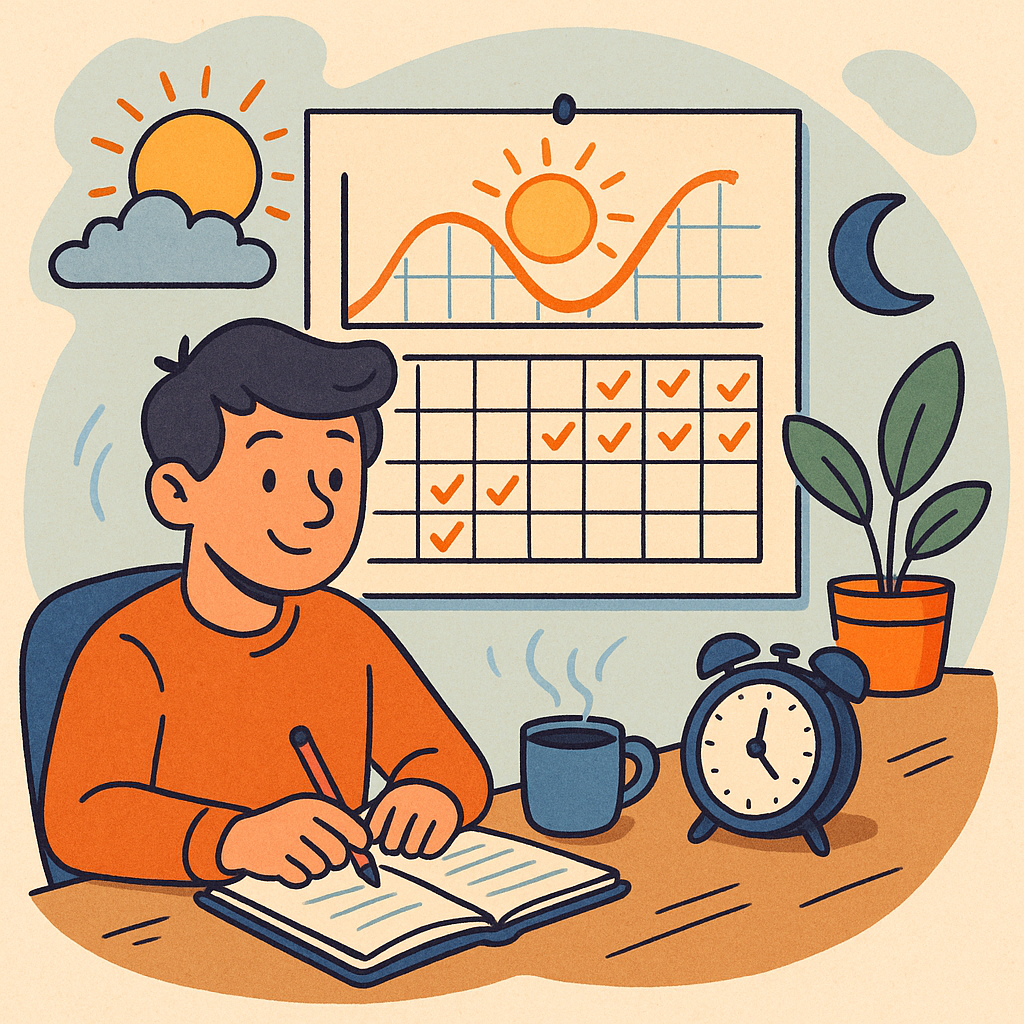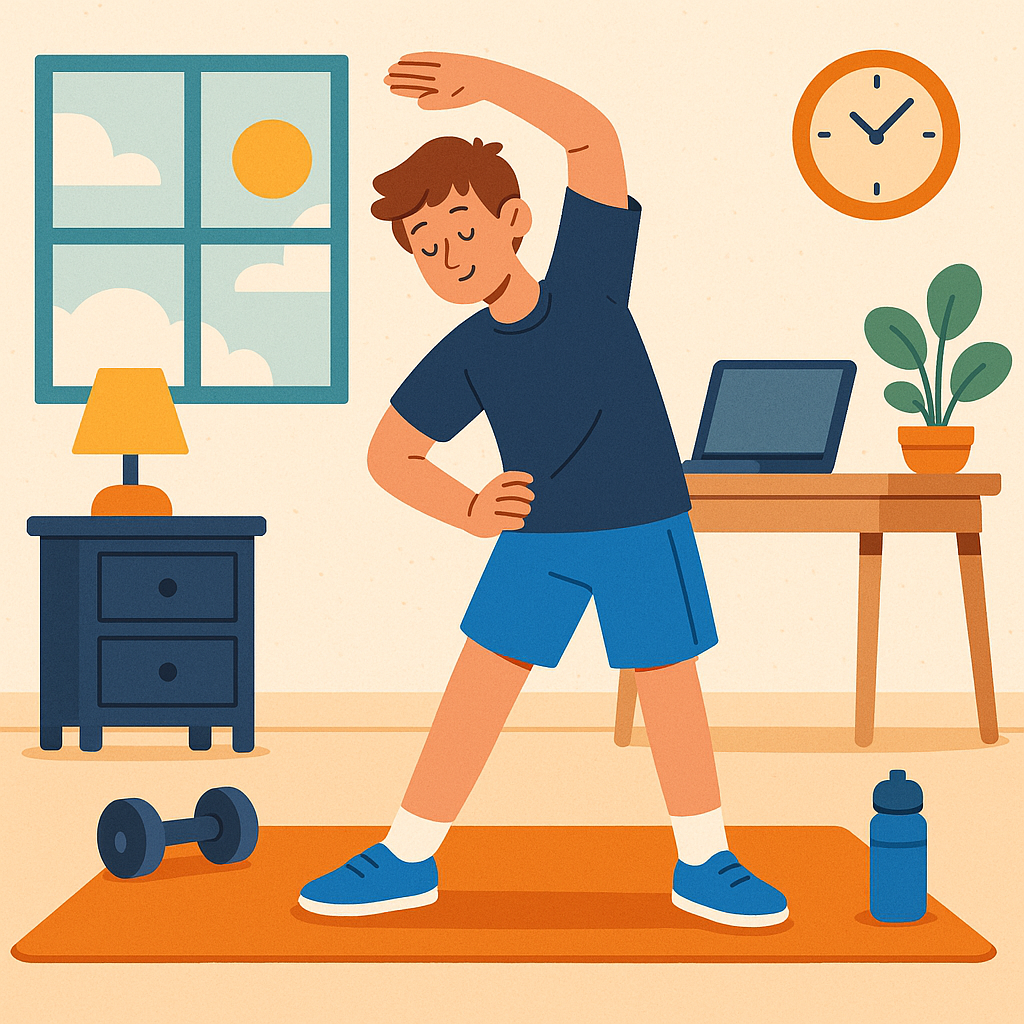Want to harness natural energy peaks to boost focus, creativity, and wellbeing? This guide shows how aligning your schedule with your body’s internal clock delivers real gains—smart, science-backed, and ready to use.

What Are Natural Energy Peaks?
Your body cycles through highs and lows each 24 hours, driven by circadian and ultradian rhythms. Most people experience:
- A morning peak 2–4 hours after waking
- A post-lunch dip early afternoon
- An evening rebound late afternoon/early evening
Organizing your day with these peaks in mind is the key to improved efficiency.
Why It Matters Now: The Energy-First Trend
Modern productivity strategies are shifting from rigid schedules to energy-first design. A recent Medium article emphasizes matching difficult tasks to energy highs and easy duties to lows medium.com.
Business analytics tools report aligning work with peak times boosts output by ~20% and halves errors insightful.io. With hybrid and remote work blurring boundaries, designing around energy isn’t just a luxury—it’s essential.
Step-by-Step Guide to Designing Your Day
1. Track Your Energy Patterns
Identify your natural energy peaks by:
- Logging energy/focus hourly for 5 days (pen and paper or app)
- Noting consistent high/low periods
- Identifying if you’re a lark, night owl, or intermediate
This data is your foundation.
2. Map Tasks to Energy Cycles
With your chart in hand:
| Energy Level | Type of Task |
|---|---|
| Morning Peak | Analytical, decision-making, creative breakthroughs |
| Afternoon Dip | Routine work, meetings, emails |
| Evening Peak | Creative review, brainstorming, planning |
This aligns with research that late-morning is ideal for high-level mental efforts and the late afternoon for strategic or collaborative activities
3. Build Your Ideal Day (Sample Schedule)
- 7–9 AM: Wake up + sunlight exposure to set circadian rhythm
- 9–11 AM: Morning peak—work on toughest tasks
- 11–12 PM: Break/light exercise
- 12–2 PM: Lunch + power nap or walk
- 2–4 PM: Depth work wraps up
- 4–6 PM: Evening rebound—creative work or prep next day
- 6–7 PM: Wind down + avoid high-stim activities
- 9–10 PM: Bedtime routine—dimming light sets melatonin
This fluid structure supports engagement, recovery, and productivity.
4. Use Smart Tools and Environment Cues
- Light exposure: Morning sunlight or daylight lamps resets rhythms.
- Caffeine naps: Coffee + 20‑min nap post-lunch boosts alertness.
- Calendar blocks: Guard peak hours—use Do Not Disturb.
- Flexible tech: Apps like Rise or Sunsama adapt to your daily shifts.
5. Adapt with Chronotypes & Ultradian Rhythms
- If you’re a night owl, shift peak tasks later.
- Respect your body’s midday and pre-dawn ultradian dips—use those for low-energy work sleepspace.com+1sunsama.com+1.
- Use zeitgebers (meal/exercise times, light) to subtly shift your energy peaks gradually .
Overcoming Common Challenges
- Rigid workplace? Protect your peaks within constraints—delegate or compress non-peak tasks.
- Social obligations? Batch them during energy lows.
- Inconsistent energy? Refresh sleep hygiene: stable wake-up, no late screens, evening dim lighting hbr.org+6lifeat.io+6wsj.com+6.
Trend Highlight: Adaptive Productivity Tech
Tools like Rise Science, Sunsama, and Insightful automatically detect your peaks and recommend schedules. This integration supports a shift toward bio-aligned work planning, reducing burnout and enhancing performance.
Results You Can Expect
- ~20% productivity gain and fewer mistakes
- Better work-life balance and reduced fatigue
- Creative breakthroughs during energy rebounds
Getting Started: 5‑Day Energy Challenge
- Log your energy and tasks hourly.
- Identify peak/dip times.
- Time-block your week accordingly.
- Use light, naps, and breaks to support rhythm.
- Re-evaluate weekly and adjust.
Conclusion
Designing your day around natural energy peaks transforms how you work: from exhausting to strategic, from fragmented to focused. This guide gives you science, strategy, and tools to unlock your personal chronobiology—so you work with your rhythms, not against them.
References
1. Roenneberg, T., Wirz-Justice, A., & Merrow, M. (2003).
Chronotype and social jetlag: Understanding your energy peaks. Chronobiology International, 20(2), 235–255. Retrieved from https://www.ncbi.nlm.nih.gov/pmc/articles/PMC8063933/ (2021)
2. Sleep Foundation. (2024).
Chronotypes: Definition, types, & effect on sleep. Retrieved from https://www.sleepfoundation.org/how-sleep-works/chronotypes (2023)
3. Martin, L. M. (2024, April 19).
Don’t waste your “power hours” in meetings. The Wall Street Journal. Retrieved from https://www.wsj.com/lifestyle/workplace/dont-waste-your-power-hours-in-meetings-560c94f8 (2024)






